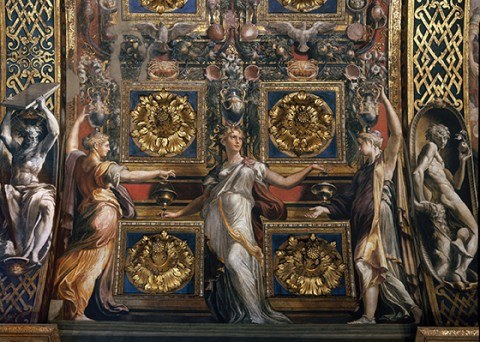The Foolish Virgins, by Francesco Mazzola

After stints in Rome and Bologna, the artist Francesco “Parmigianino” Mazzola (1503–1540) returned to his native Parma to paint the vault and apse of Santa Maria della Steccata in 1530–31. Progress on the project was slow, and the commission was eventually given to another artist. Parmigianino did finally manage to paint The Wise Virgins and The Foolish Virgins, based on Jesus’ parable in Matthew 25:1–13. Moses and Adam are painted to look like sculptures, a technique known as grisaille, and flank the central characters. The lamps of the foolish virgins are unlit; they have forgotten their oil and have none with which to trim their lamps when the bridegroom arrives. The maidens balance vases on their heads. The use of excessively elongated torsos, elaborate draperies, and figura serpentinata (twisting, dynamic movements) are all characteristics of the new, contemporary style known as Mannerism, which depicted allegorical and religious figures in a sensual and stylized form.





